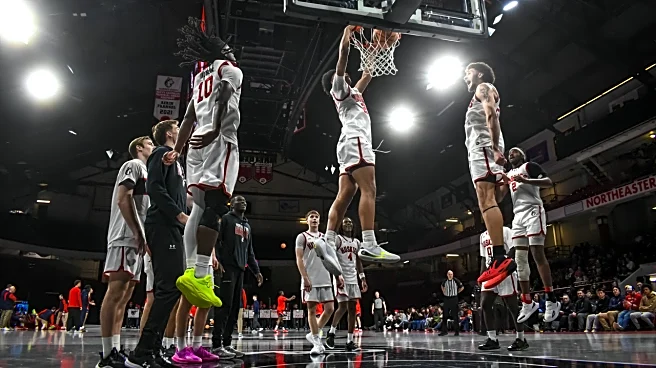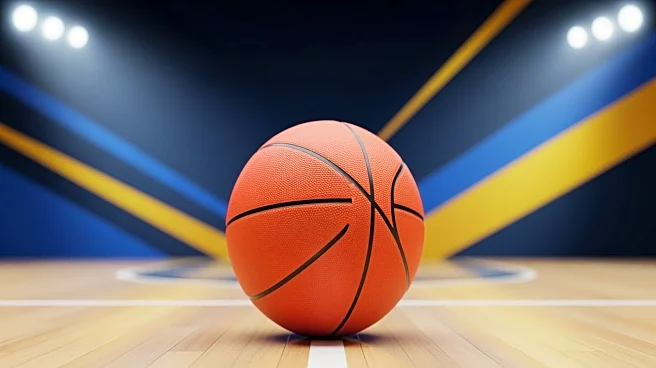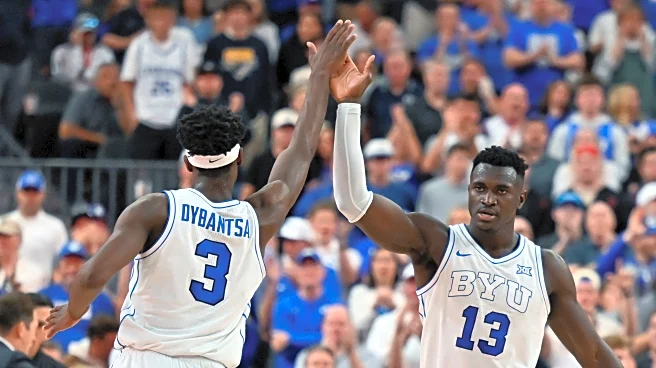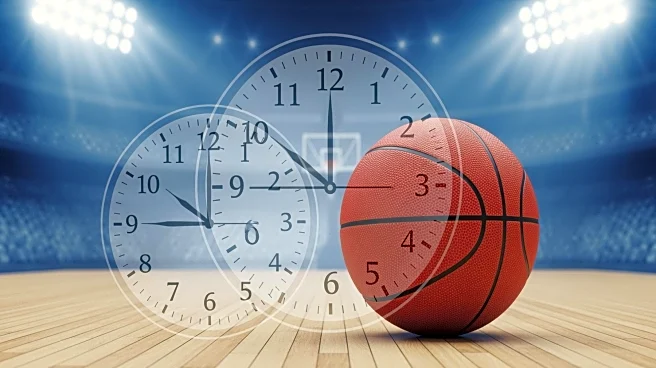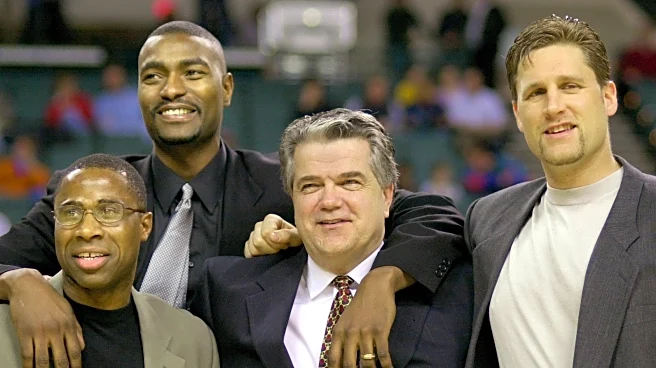You can’t tell the story of sports in Boston without Matthews Arena.
Long before it became the home for Northeastern Huskies basketball – who will close the chapter on the building’s basketball history
on Saturday against Vermont – it was a launching pad for some of the city’s greatest sporting brands.
Built in 1910 (and named the Boston Arena), the building burned down in 1918 before a new, identical building returned in 1921. Matthews hosted a wide variety of events, ranging from Teddy Roosevelt’s political rallies to playing host for the fledgling NHL’s Boston Bruins at their inception.
But, the story here is basketball, and Matthews has quite the history in that department, too. It hosted its first ever professional basketball game in 1925, as the Boston Whirlwinds took up residence; before too long, they moved out, and in 1946, Matthews became the home arena for the newly-formed Boston Celtics.
Just a few miles from Matthews, the rafters at the TD Garden are home to 18 NBA Championship banners. None of them would exist if Matthews — then known as Boston Arena — wasn’t there to provide not just a home for the basketball games, but a base for the organization to grow out of 24 hours a day.
The Celtics split games between the Boston Garden and Matthews Arena for the first nine years of existence. Even though they had two home courts, Matthews was the center of the organization’s universe from the start.
“We only formed our organization in June of 1946, and the season started in November,” Jeff Twiss, the Celtics’ VP of Media Services and Alumni Relations, told Mid-Major Madness. “That doesn’t really leave a lot of time to start an organization. They didn’t have great facilities like we have today, so they had to sleep in cots on the floor below the court. You can picture Army cots lined up.
“It was kind of a three-ring circus to try to get the organization going. Boston Arena at least provided the complex for it.”
The players who slept in those conditions didn’t end up having a very successful season, going just 22-38 in the organization’s first season, but the team had a home.
Even though basketball had been around for a half century, there hadn’t been a successful endeavor into creating a professional league yet, and the sport grew slowly. After all, the inventor of basketball, James Naismith, didn’t view the sport as much more than a gym class activity. But when Red Auerbach came to Boston as the new Celtics coach in 1950, he changed that for the city, and the arena was a vehicle.
“Professional basketball had a learning curve that really had to be spoon-fed to people to really get them to understand the simplest parts of the game,” Twiss said. “So I think it was good that they had the luxury of having two arenas in your city, and they could utilize the arena if Boston Garden was occupied, they could use that for exhibitions or clinics.”
Twiss added that the Celtics and the Boston Globe ran kids clinics at the arena to help teach the game to the next generation, and it was that generation that helped spark basketball’s forever growth.
The Celtics grew out of Matthews pretty quickly, moving full-time into the Garden for 1955-56, one year before Bill Russell came along and led the franchise to 11 championships in 13 seasons.
Matthews wouldn’t see a consistent basketball tenant again until 1981. Northeastern University, which had been using the building for men’s hockey purposes since 1929, officially purchased the building in 1979. Two years later — following a season in which the Huskies miraculously made the NCAA Tournament for the first time in school history — the men’s basketball team moved out of Cabot Gym and into Matthews. At long last, basketball was back at the storied gym.
Northeastern saw consistent success in their early days at the barn, reaching the Tournament six times in their first 10 years at Matthews, including four in a row between 1984-87. The legendary Jim Calhoun, who will be in attendance for Saturday’s building finale, coached five years at Matthews, and collegiate and NBA superstar Reggie Lewis, whose family will also be on hand Saturday, joined him for four and set Northeastern’s all-time scoring record and etching his name into Boston sports lore.
Lewis’ Boston legacy grew as an All-Star for the Celtics before his tragic passing in the summer of 1993.
“Reggie reinforced putting Northeastern basketball onto the map,” Twiss said. “When he came to us, he was just so spectacular in all facets of his game to lead his teams.”
Lewis’ number hangs from the rafters at both Matthews and TD Garden. His name is attached to the Reggie Lewis Track and Athletic Center in Roxbury as well, cementing his status as a Boston icon.
The Huskies haven’t seen a player like Lewis walk through the door since, but the home team hasn’t necessarily longed for success. Northeastern’s America East Championship returned them to the NCAA Tournament in 1991, and Bill Coen’s CAA Championship teams in 2015 and 2019 called Matthews home, continuing to add to the building’s illustrious annals.
Coen is the longest tenured coach in the CAA. He’s the winningest coach in Northeastern men’s basketball history, recently surpassing 300. If anybody understands the meaning of Matthews Arena, it’s him.
“There’s so many memories [in Matthews Arena] and so many individual performances,” Coen said. “It’s got a lot of history, and I think the basketball program has added to that history. I don’t know if there’s one [memory that sticks out], but there’s a ton of years of memories, of relationships, of players, of sweat and hard work… that’s what I’ll remember.”
Even though Matthews’ days hosting basketball will come to a close Saturday, Northeastern men’s and women’s hockey still have a few more to play in the legendary arena. After all, the building has been nothing if not versatile through the years.
“It was one of the first real multi-sport uses for a facility,” Twiss said. “It gave a good connotation of being well-served to many facets of the general public.”
Northeastern is ready to bring 115 years of history into the next generation. In its place will be a state-of-the-art athletics complex that holds an arena, student recreation spaces and more. Husky basketball will move to the Cabot Center until the new arena is finished, a much smaller venue that has played host to volleyball and other sports on campus.
The new building, unsurprisingly, will be built in the image of its predecessor. The terra cotta entry arch, arguably the arena’s most famous feature, will be preserved and reused. An in-depth exhibit of Matthews’ history will be prominently displayed in the foyer. Renderings of the sports hall itself look very, very similar to the Matthews of today, even with an admittedly modern twist.
If the design does in fact come to perfect fruition? Upon completion, it looks like you could convince yourself, for a split-second, that nothing’s changed at all. After all, your feet will be on the same land, with the same banners fluttering in the air above, and an oh-so-familiar view in every direction.
But, just like any remake or sequel, it won’t quite be the same. So, on Saturday, when the buzzer sounds, the rims come down, and the court comes up, it’ll mark the end of an era, as basketball officially says goodbye to the world’s oldest multi-purpose arena.
Until then, though, it’s home to just another college basketball game, as Vermont and Northeastern prepare for their third clash in as many seasons. Back at Matthews.
One last ride in the old barn.
